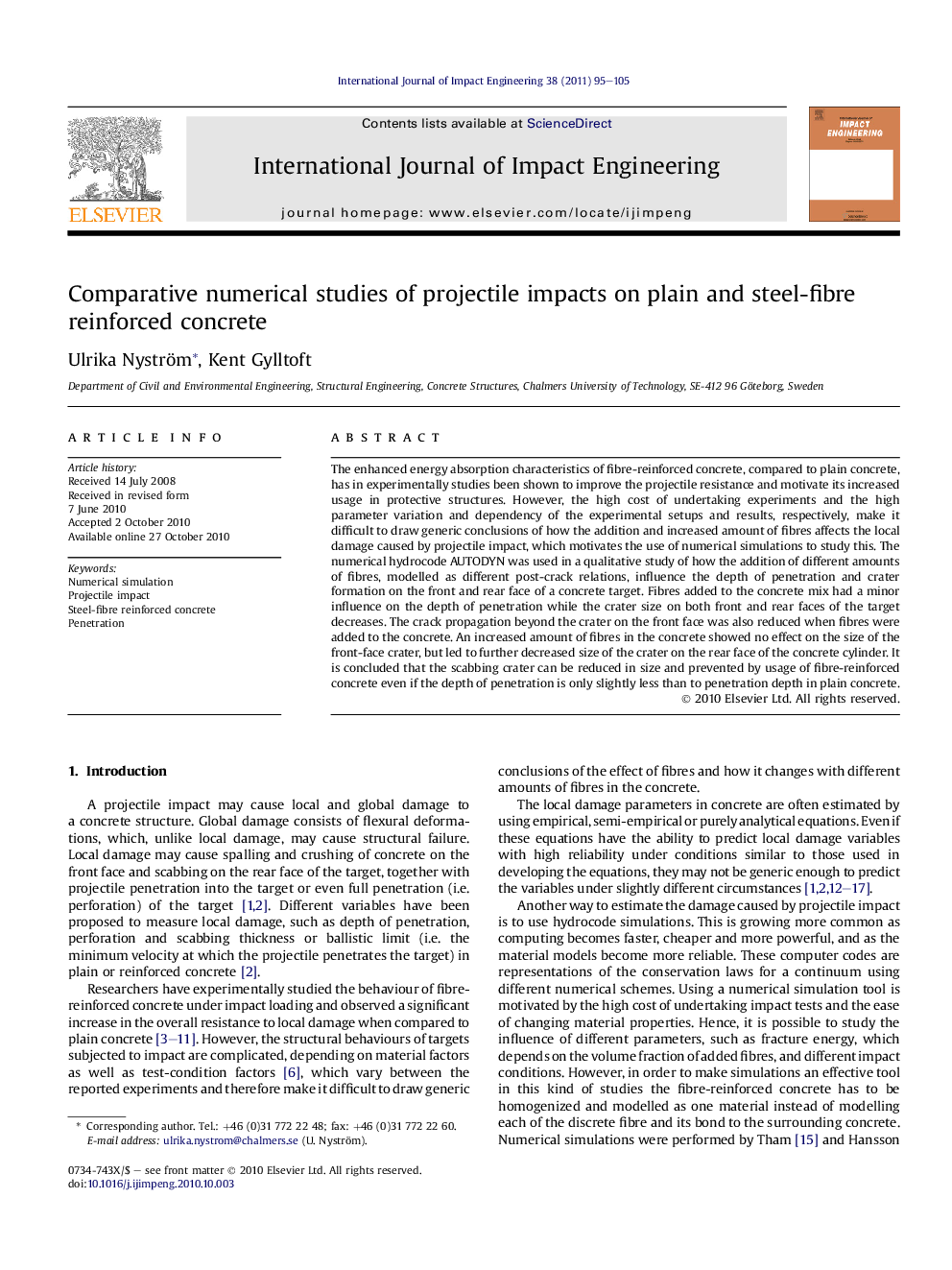| کد مقاله | کد نشریه | سال انتشار | مقاله انگلیسی | نسخه تمام متن |
|---|---|---|---|---|
| 776900 | 1464120 | 2011 | 11 صفحه PDF | دانلود رایگان |

The enhanced energy absorption characteristics of fibre-reinforced concrete, compared to plain concrete, has in experimentally studies been shown to improve the projectile resistance and motivate its increased usage in protective structures. However, the high cost of undertaking experiments and the high parameter variation and dependency of the experimental setups and results, respectively, make it difficult to draw generic conclusions of how the addition and increased amount of fibres affects the local damage caused by projectile impact, which motivates the use of numerical simulations to study this. The numerical hydrocode AUTODYN was used in a qualitative study of how the addition of different amounts of fibres, modelled as different post-crack relations, influence the depth of penetration and crater formation on the front and rear face of a concrete target. Fibres added to the concrete mix had a minor influence on the depth of penetration while the crater size on both front and rear faces of the target decreases. The crack propagation beyond the crater on the front face was also reduced when fibres were added to the concrete. An increased amount of fibres in the concrete showed no effect on the size of the front-face crater, but led to further decreased size of the crater on the rear face of the concrete cylinder. It is concluded that the scabbing crater can be reduced in size and prevented by usage of fibre-reinforced concrete even if the depth of penetration is only slightly less than to penetration depth in plain concrete.
Journal: International Journal of Impact Engineering - Volume 38, Issues 2–3, February–March 2011, Pages 95–105